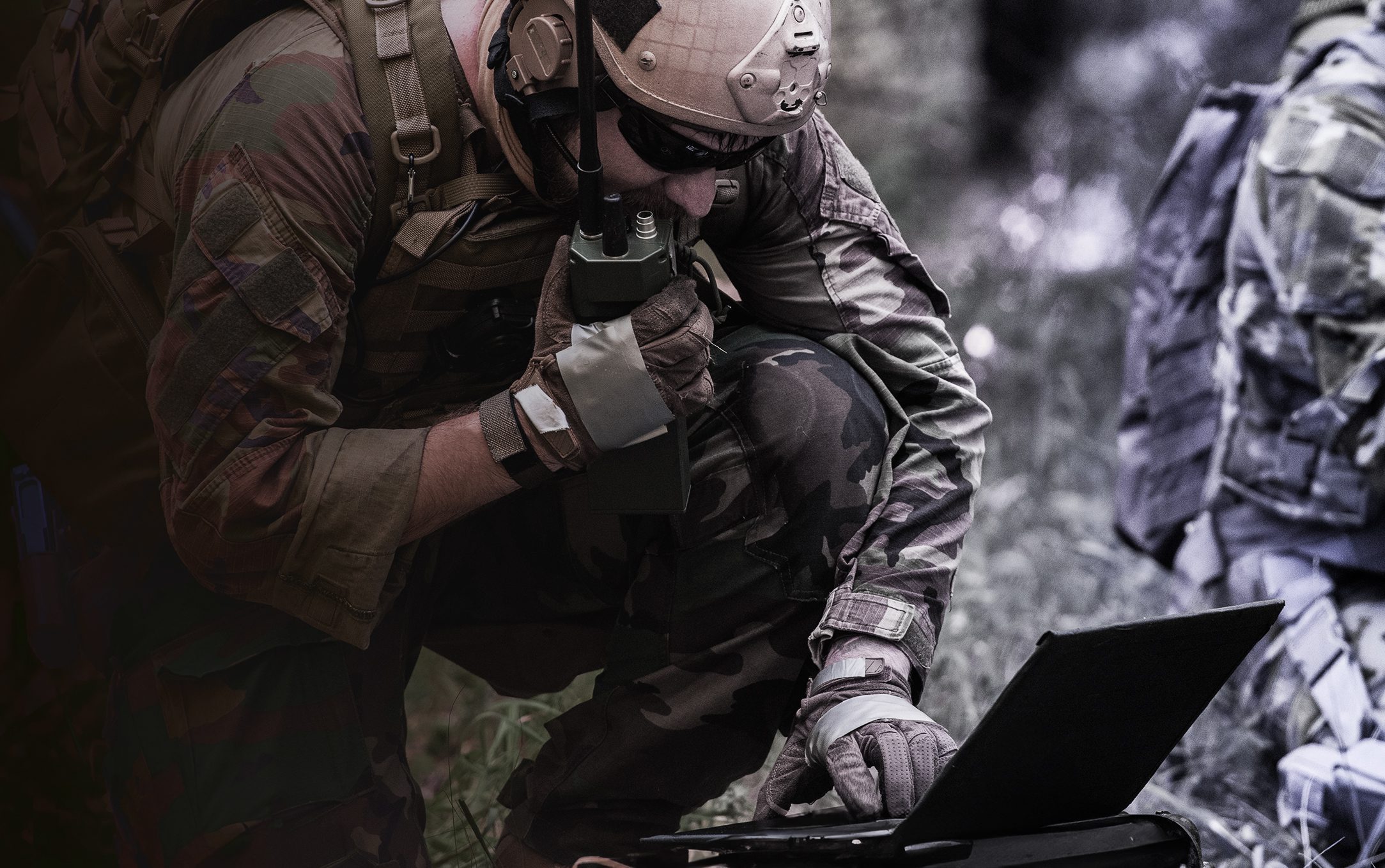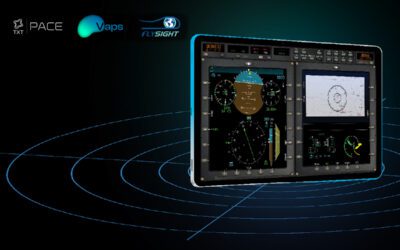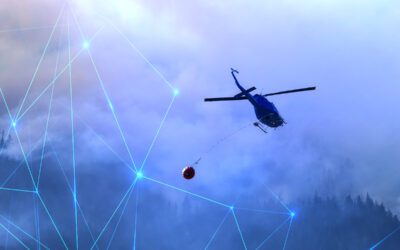This article is enriched by the insights of Marco Gazzaniga, Head of Future System Business Development at FlySight
The use of unmanned aircraft systems (or UAS) alongside human-crewed aircraft in military operations has increased exponentially over the past two decades, particularly during in asymmetric warfare situation where drones were used extensively for reconnaissance, intelligence and – within limited organizations – target engagement under remote control ground installations. Example of these use are evident in the past operations involving Afghanistan, Iraq and Libya where Class III UAS (see figure below) were employed for strategic and tactical use, under strict centralized remote controls and COMAO (Composite Air Operation) coordination.
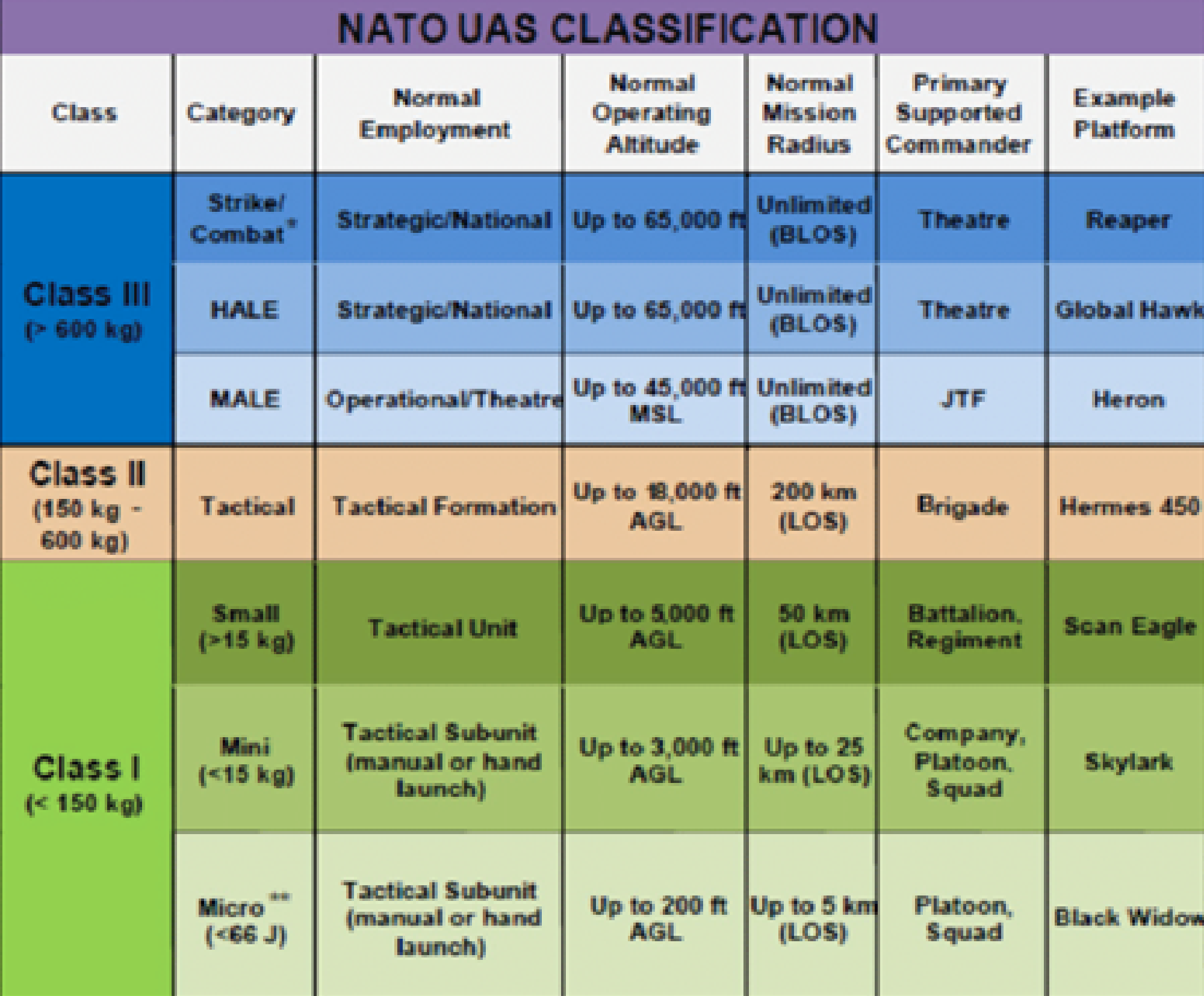
NATO UAS CLASSIFICATION (NATO ATP-3.3.8.1)
The introduction of field deployable Class 1 and 2 sUAS (small UAS Class I) and UAS supporting local tactical employment, has generated the MUM-T definition, defined as “a single, manned air-vehicle (fixed or rotary wings) operating with a single or multiple unmanned air vehicle(s), supervised and controlled by the manned aircraft, to increase the probability of mission success”, still in asymmetric warfare scenarios and with limited ALFUS (Autonomy Levels for Unmanned Systems) capabilities.
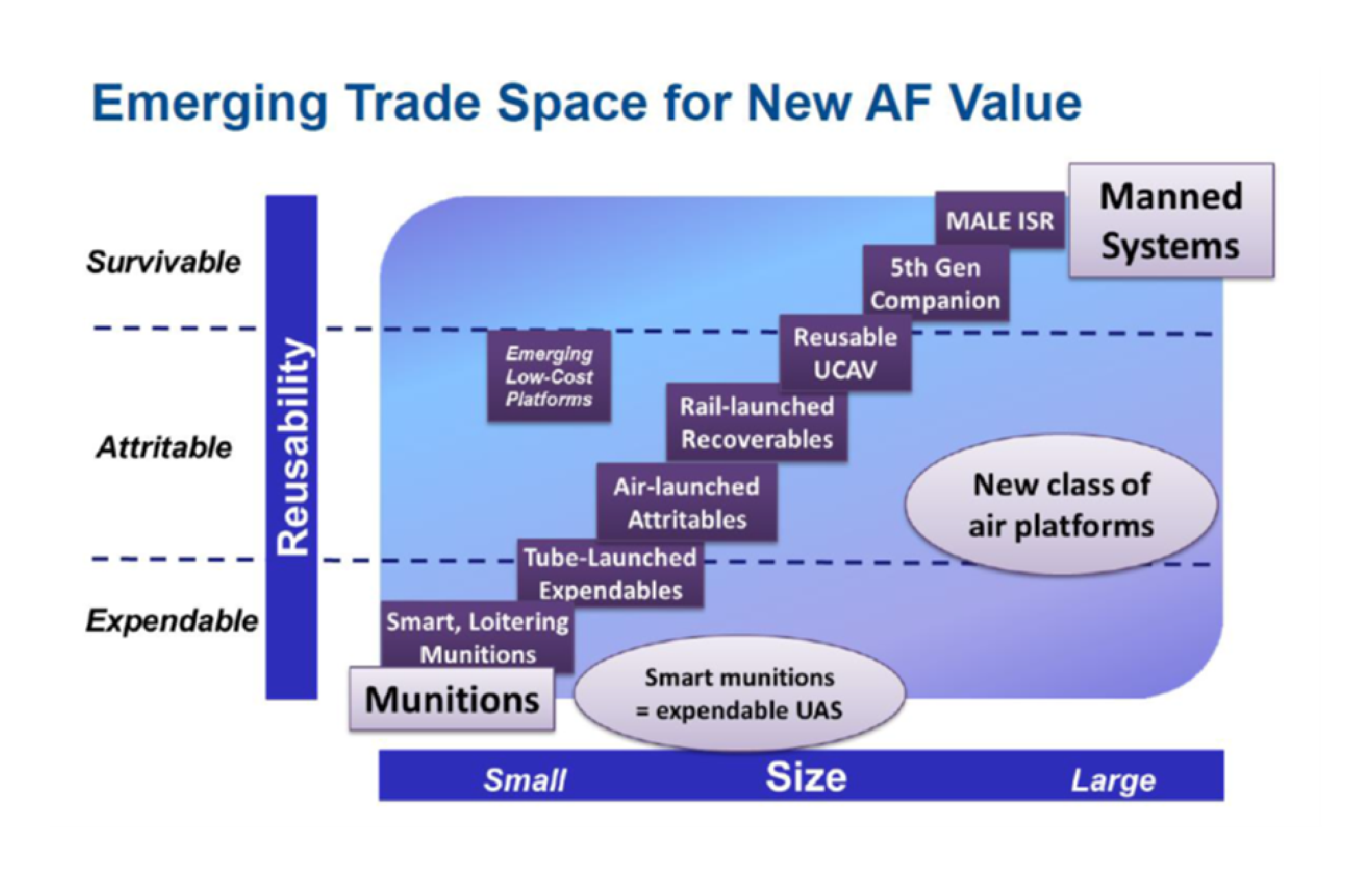
EMERGING TRADE SPACE FOR NEW AF VALUE (USAF UA Air University)
The definition and publication of Robotics and Autonomous Systems (RAS) standards to provide operationally relevant, reliable, and affordable automated technology for stand-alone and applique’ systems that reduce burden on Soldiers and increase combat power by increasing war fighter protection (see figure above), reducing required manning, and improving personal and unit mobility by leveraging state-of-the-art technology, has further increased the need for higher ALFUS metrics in the sUAS/UAS segments, by giving the MUM-T crewed air vehicle over the loop responsibility in SWARM-based configuration.
This static vision has been violently changed by the symmetric operations in Ukraine, where peer-to-peer confrontations have clearly identified the lack of survivability for crewed platforms in air assault manoeuvres, prompting to a new MUM-T definition called Human-Machine Teaming (HMT) where the sUAS/AUS are part of the so-called Ubiquitous Combat Cloud (UCC) Mobile Ad-hoc Network (MANET) where distributed Battlefield Management System (BMS) manage highly autonomous sUxS/UxS assets (Air Launched/Ground Deployed), supporting manoeuvre execution.
OPENSIGHT, supporting federated deployed systems and integrated into multi-layered platforms, thanks to its real-time Situational Awareness, Augmented Reality and A.I. base Automatic Target Recognition (ATR) unique features is the state-of- the-art application empowering these MUM-T capabilities in Multi-Domain Operations (MDO) evolving scenarios, defined by the New Operational Environments (NOE) applicable to Urban combat situations.
Applications for MUM-T in the military
Although the originally defined MUM-T concepts have been identified and widely welcomed by almost every modern military organisation worldwide, its practical tactical implementation with Class 1 and 2 sUAS/UAS is still dependant on ALFUS driven capabilities, sensor performances and dynamic wide band protected communications systems. Although they are seen as powerful and effective resources for asymmetric warfare deployment, they still need to assess the implications on the Doctrine, Organization, Training, Material, Leadership, Personnel, Facilities, Interoperability (DOTMLPFI) for their full scale integration in tactical formation to become parts of standard procedures and planning. A typical example of asymmetric warfare operation is presented in the figure below.
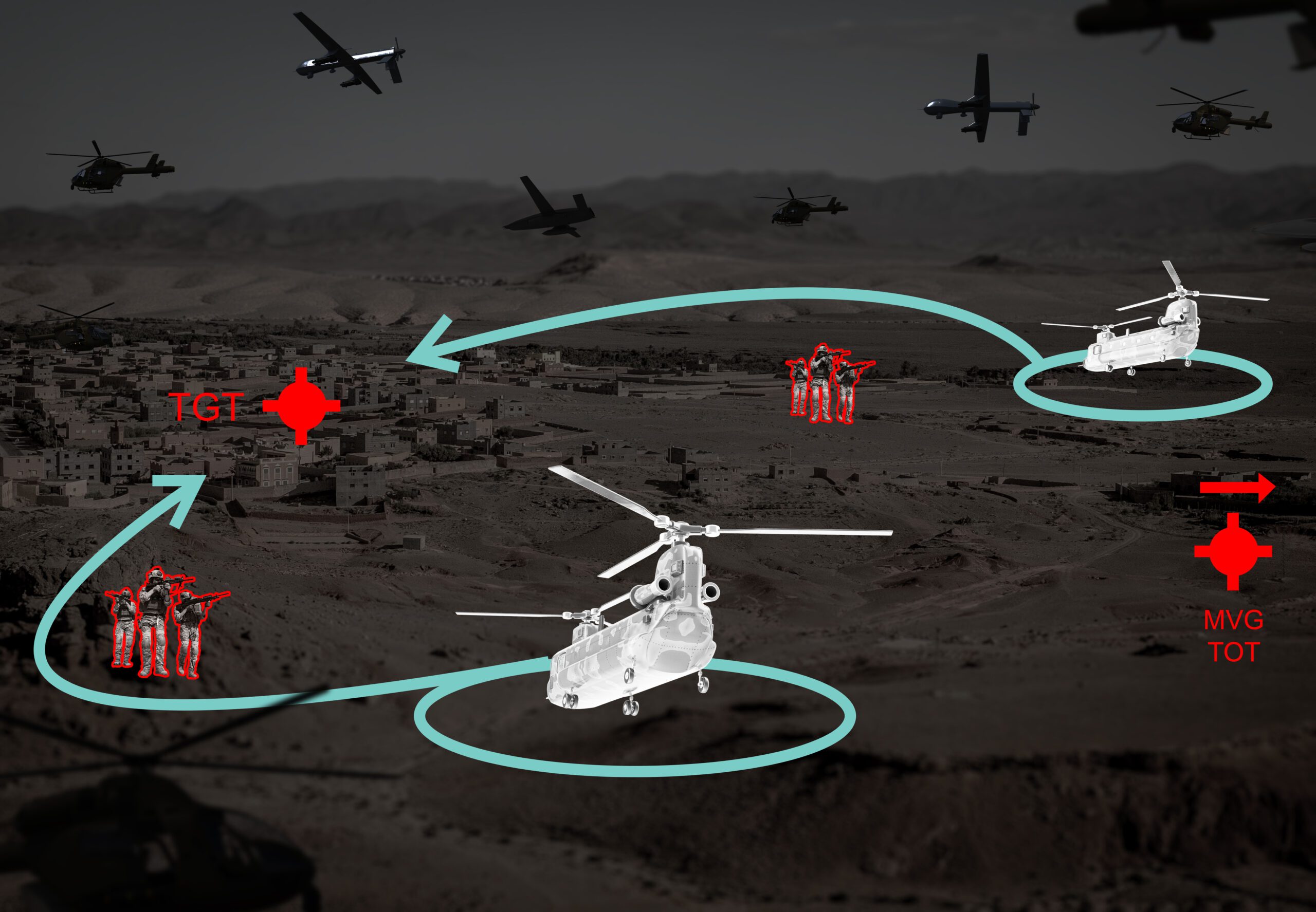
A strategic asymmetric warfare exemplification
By adding extra features such as high-level Autonomy, AI and Augmented Reality software into the sUAS/UAS and crewed assets mission computer software, greater Human-Machine Teaming capabilities shall be obtained, and thus the crewed air vehicle could operate in a safer area delegating the sUAS/UAS – with special attention to the smaller, low noise/signatures Air Launched Effectors (ALE) – the more dangerous deployments, and implementing low-risk strategies can ensure a more positive outcome.
In this scenario wide band MANET communication is critical and all assets will log to the predefined network for C2 and data dissemination, to they enhance situational awareness and, therefore, decision-making and mission effectiveness by combining manned aircraft and unmanned vehicles to work symbiotically, as showed in the figure below.
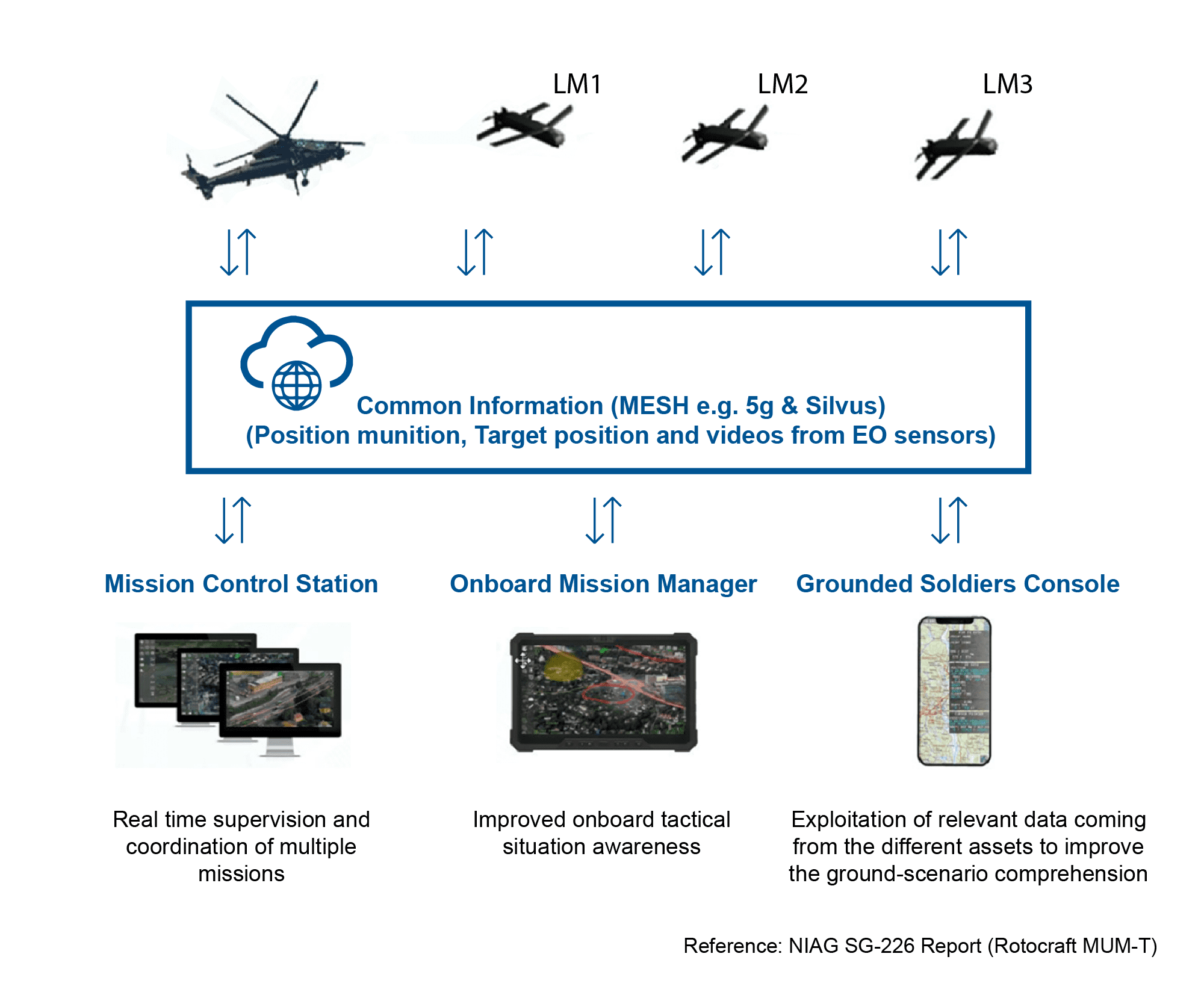
Situation awareness and decision-making empowered by manned aircraft and unmanned vehicles
The ability to solve complex tactical issues at machine speed ensures provided by Robotics and Autonomous Systems capabilities, will be of paramount importance in complex and chaotic environment where the sull use of UxSs will require combat support features for the human components to successfully deal with the tactical situation and support combat decisions.
The civilian applications of MUM-T
Manned-Unmanned Teaming certainly has a role to play in the civilian world, with special reference to Search & Rescue operations, teamed with SAR helicopters (see picture below)
A clear example is the UKSAR2G program, that was designed to complement work being carried out by the Maritime and Coastguard Agency to develop regulations under which UAVs can operate as SAR aircraft and are expected to play a key role also saving helicopter flight times when not needed. The search and rescue service is due to begin operations in 2024 and the UAS streamed live incident footage to the HM Coastguard Regional Control Centre. This real time situation awareness supported the incident commander’s decision making, for example maintaining the Caernarfon SAR S-92 helicopter at readiness when there is no threat to life.
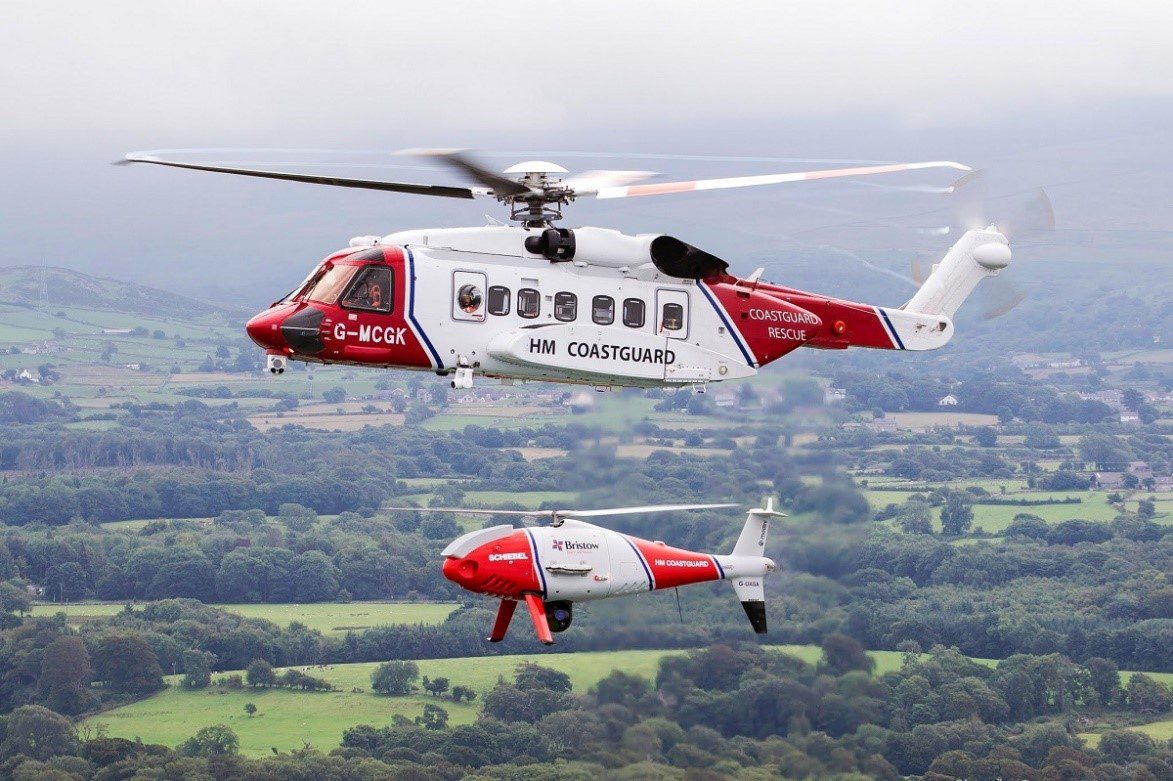
Bristow Helicopters HM Coastguard Public Domain
In other cases, MUM-T has particular relevance to firefighting, where crewless vehicles can be sent into high-risk environments to assess and examine the situation. A drone, for example, fitted with multispectral imaging technology can identify potential ‘hot spots’ where a fire could reignite, even if the surrounding area has been extinguished. This will have greater relevance as the advent of climate change causes more and more wildfires in remote locations.
MUM-T and multispectral imaging also have a role to play in Search & Rescue operations. A small drone or swarm drones can ascend mountainous terrain in seconds and cover a much wider search area than human S&R teams in a much shorter time. Using unmanned vehicles increases the chances of spotting a victim, especially if additional multispectral analysis is used, such as infrared or thermal imaging.
MUM-T also has a considerable role to play in law enforcement and surveillance. For a law enforcement agency to keep a helicopter in the air costs a lot of money. Unmanned vehicles such as drones are far cheaper to run and maintain. And while the manned helicopter is unlikely to be entirely usurped by drone technology any time soon, it does expand the range and capabilities of aerial support and surveillance without sending costs spiralling out of control.
Unmanned and Manned Aircraft Evolutions
What will advance in the years to come is the integration of AI, AR and ATR into Robotic and Autonomous Systems (RAS) architectures supporting Multi-Domain Operations. In these scenarios, AI could be used to automate many of the tasks performed by human operators. However, this may cause concern among some until AI has been proven unequivocally to be reliable. Currently, what AI can do effectively is to analyse data and use machine learning to understand how variants in data can influence the decision-making process.
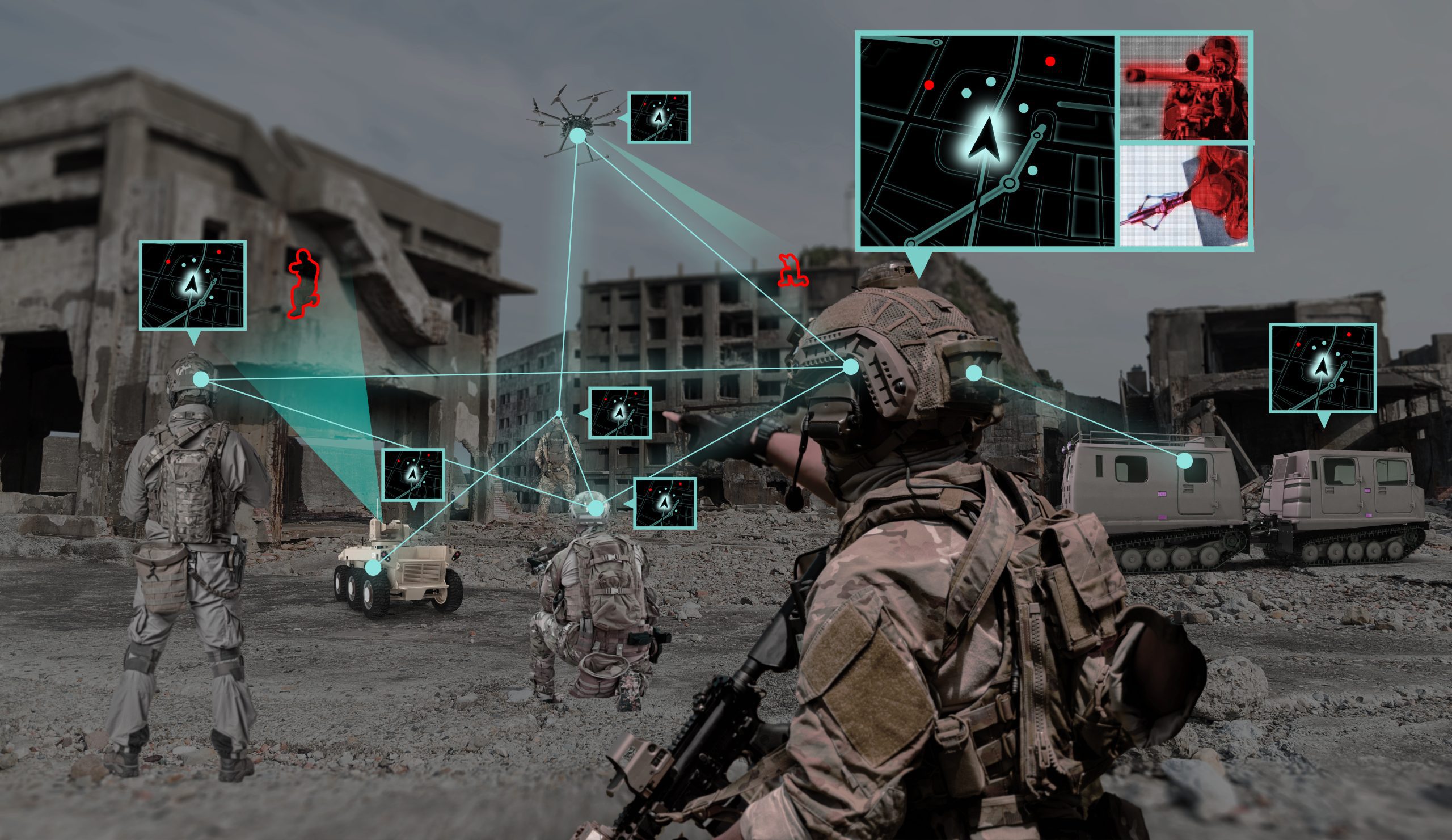
US Army Robotic and Autonomous Systems Strategy
The human element can never be entirely removed from the equation, especially concerning mission-critical decision-making and situations when lives are at stake. The technology integrated into unmanned aircraft can, however, help deliver greater levels of detail and big data regarding surveillance. In that aspect, AI networks can help to real-time data processing, eliminating background noise and using machine learning to isolate essential information.
Using Augmented Reality – the OPENSIGHT solution
Another advancement in MUM-T operations is the addition of Augmented Reality or AR. A turnkey solution such as FlySight’s OPENSIGHT system is a perfect example of how cutting-edge technology can augment the experience of human operators to get a better picture of the situation.
OPENSIGHT is a multi-platform PED (Processing, Exploitation and Dissemination) system with a comprehensive geo-exploitation toolbox for mission data analysis and visualisation. Suitable for air, sea and land-based operations, OPENSIGHT demonstrates how manned and unmanned teaming can be effectively improved through the use of Augmented Reality and other resources such as automatic target recognition.
Because the system uses plugins that can be easily integrated into existing hardware, the user can get up to speed on the implementation and operation of the systems much more quickly. This reduces training time and costs, enabling the system to come onstream much sooner.
OPENSIGHT has been developed with the increased use of manned-unmanned teaming in mind. It synergistically integrates into both manned and unmanned scenarios, easily allowing data transference between both elements of an operation.
Using Automatic Target Recognition – the OPENSIGHT solution
OPENSIGHT Automatic Target Recognition provides a training environment for image/video processing of all EO sensors, representing a comprehensive tool for training functions in new operative scenarios, exploiting tune state-of-art Deep Learning and enabling performance maximization.
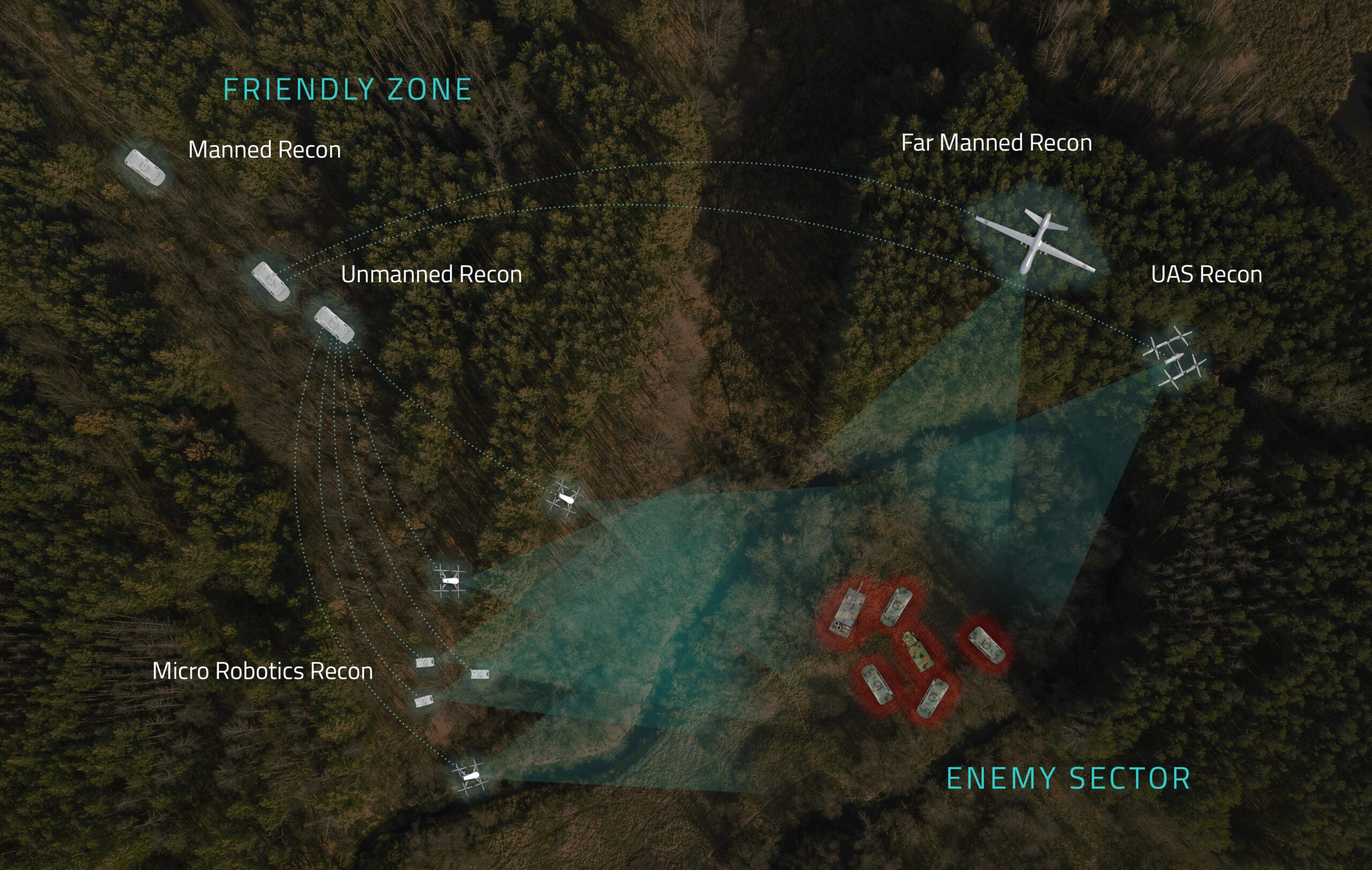
US Army Robotic and Autonomous Systems Strategy exemplification
You can find out more about OPENSIGHT here, or contact us in confidence to discuss your needs and how a bespoke system could give you the edge.

